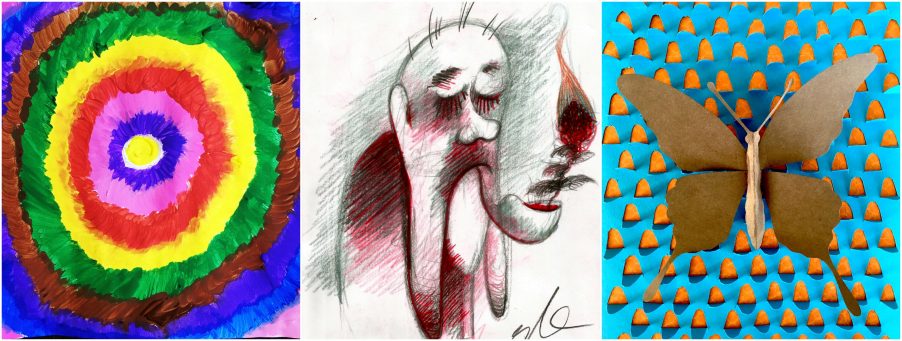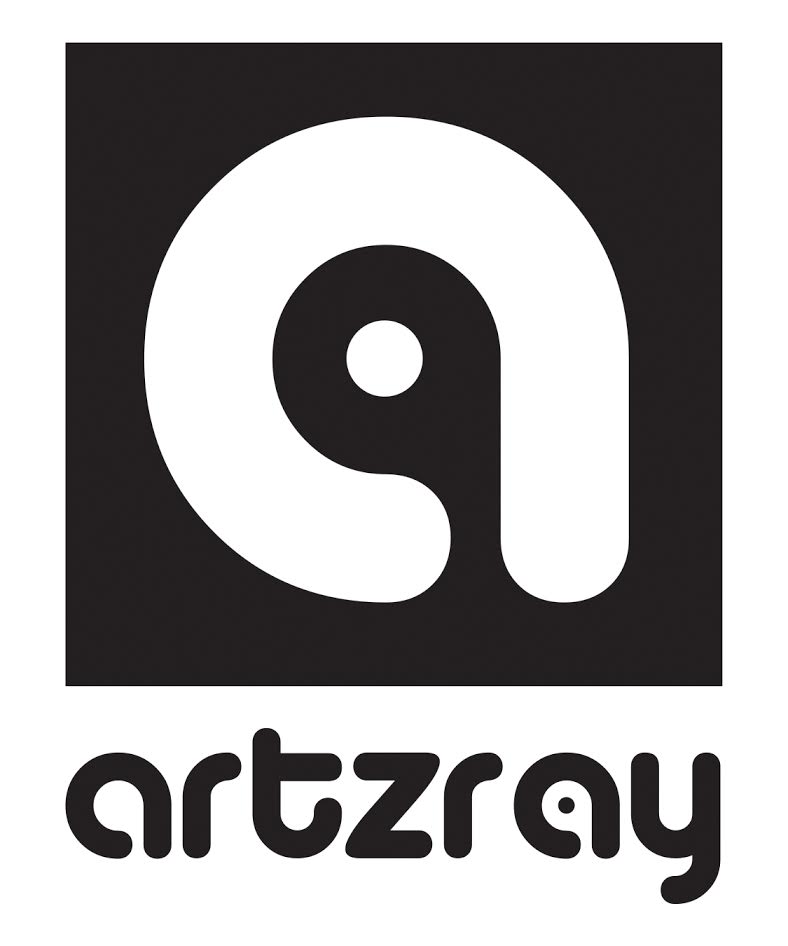Bridging Art And Mental Health – Painted Brain


Dave Leon, the founder and director of Painted Brain answers some questions for Artzray about the intersection of art, mental health and community. He is a Licensed Clinical Social Worker and is driven in his work with Painted Brain by a vision of a world in which mental illness is truly accepted as one more aspect of the beautiful tapestry of difference that binds us together as humans. Painted Brain is focused on bridging the arts and mental health communities.
What is Painted Brain?
Painted Brain is a multifaceted attempt at solving a vexing societal problem, mental illness. I started this project as a single art group to try to address the most pressing problem facing the young adults I met in the early years of my social work career – isolation. I could encourage the people I was meeting, individually, to find social outlets, but where? Mental illness sometimes effects the way a person interacts with others, increasing social isolation. This compounds the kinds of personal doubts and fears that often accompany mental health symptoms. The first art group that later became Painted Brain pulled people together around the commonality of mental illness and creativity, and it has done so ever since.
We run a community center in the MacArthur Park area of Los Angeles that is free and stocked full of art supplies. We also have a speakers bureau, an online newspaper and extensive social media presence, and we run art groups as a service, train social workers and occupational therapists, and develop arts interventions to build community in existing spaces like housing facilities. But at the core, Painted Brain is a community of artists.
Are artists more prone to mental illness?
I am not a statistician but my sense is that mental illness is present in all areas of human functioning at about the same rate as it is present in the general population. In other words, if schizophrenia effects 1 in 100 adults, I believe it is just as likely to effect 1 in 100 artists, business people, and even psychiatrists. That said, I think being an artist increases some stressors that might exacerbate underlying mental health challenges. Artists express themselves in ways that invite judgment and self-criticism. Success can easily lead to excess and rejection brings a whole host of responses. It seems that there is something introspective in the arts that is also present in people that live with mental illness, in that we have to think actively about how we think and operate in, and react to, the world.
Is making art about the art or about therapy?
For us, making art is about making the community. Art is what brings people together and gives them neutral ground for creative communication. Participation at Painted Brain is coming in to attend a group until you are ready to run a group yourself. Creativity is something to share with others.
“It is not going to surprise anyone when I express my belief that art is good for everyone and that creativity is one of our core human traits.”
Does making art help someone cope with depression or other types of mental illness?
As a person who deals with depression fairly regularly, I absolutely believe that art is valuable in dealing with mental illness. Of course, not everyone can depend on art and that’s why online therapy sessions like those provided by Citron Hennessey make it easy. The biggest block, though, is our own inner critic, which tends to be cranked up high when we’re depressed. Drawing is a good outlet for me when I am depressed because drawing is a medium, I don’t take it very seriously, which means I have nothing riding on the outcome. However, people with eating disorders might definitely want to take up the Eating Disorder Treatment. You don’t play around with your health. If left unattended, in the long run, it might awake other health-related problems. And, I am not sure if art can compensate for such problems. Similarly, some people might find some comfort in smoking cannabis, which is known to reduce the effect of depression in the mind. Like you’d find the art in mine, if you were to enter this person’s house, you might find yourself looking at an array of color-changing pipes and other similar cannabis products that can be purchased on online stores like fat buddha glass or similar ones. For me, if not art, my main creative outlet is classical music, specifically the most punishing of the string instruments, the double bass. Classical is a great outlet for me because it serves all my moods so well. When I am depressed in the register of hopelessness, I can practice something annoying and repetitive and obsessively technical, safe in the knowledge that I am building muscle memory even though I feel like shit. When depression hits in the key of sadness or tragedy, I can bend towards the lugubrious.
Depression and mental illness impact our social presence, so art helps with mental illness in another way. The environment of an art group or creative activity promotes the most freedom and acceptance of difference manageable, which is excellent for people dealing with mental health symptoms. Such precautionary measures should be taken to prevent the condition from escalating into high functioning depression, which can have serious consequences. This type of depression may be difficult to recognize in oneself, but even more difficult in others. So, it might be a good idea to engage in activities such as art that can offer a great introduction to human interaction and can bring out the best in us. And if you don’t want to talk, you don’t have to.
Why does no one want to admit they have a mental illness?
This is the real question. Mental illness, at least from a diagnostic standpoint, has an impact on one in five adults. It’s important to realize that to diagnosis is dependent on a level of distress and of dysfunction due to the symptoms. One in five of us are or have been impaired in some manner by mental illness and yet we do not talk about it. But it makes sense, since talking about oneself in terms of mental health symptoms is inherently vulnerable and potentially risky in most settings. As a thought experiment: What is the first thing that comes to mind when you try to think of the most positive association with mental illness?
Finally, where did you get the name Painted Brain?
A group member came up with the idea back in 2005 — seemed perfect, instantly.
If you are a young artist dealing with depression, anxiety, bipolar disorder or any other type of mental illness, it’s good to know that there are organizations like Painted Brain that are working to offer support and build creative communities.
Featured images Painted Brain artists – Hope by Natasha, Old Man by Ned, Butterfly by Jason Munez
Mental Health Resources include:
PRPSN (Project Return, Peer Support Network) WARMLINE: 888-448-9777
National Suicide Prevention Hotline: 800-273-8255
LA County – (Department of Mental Health) DMH Access Hotline: 800-854-7771
Follow Painted Brain on:
Facebook
Instagram
Twitter





